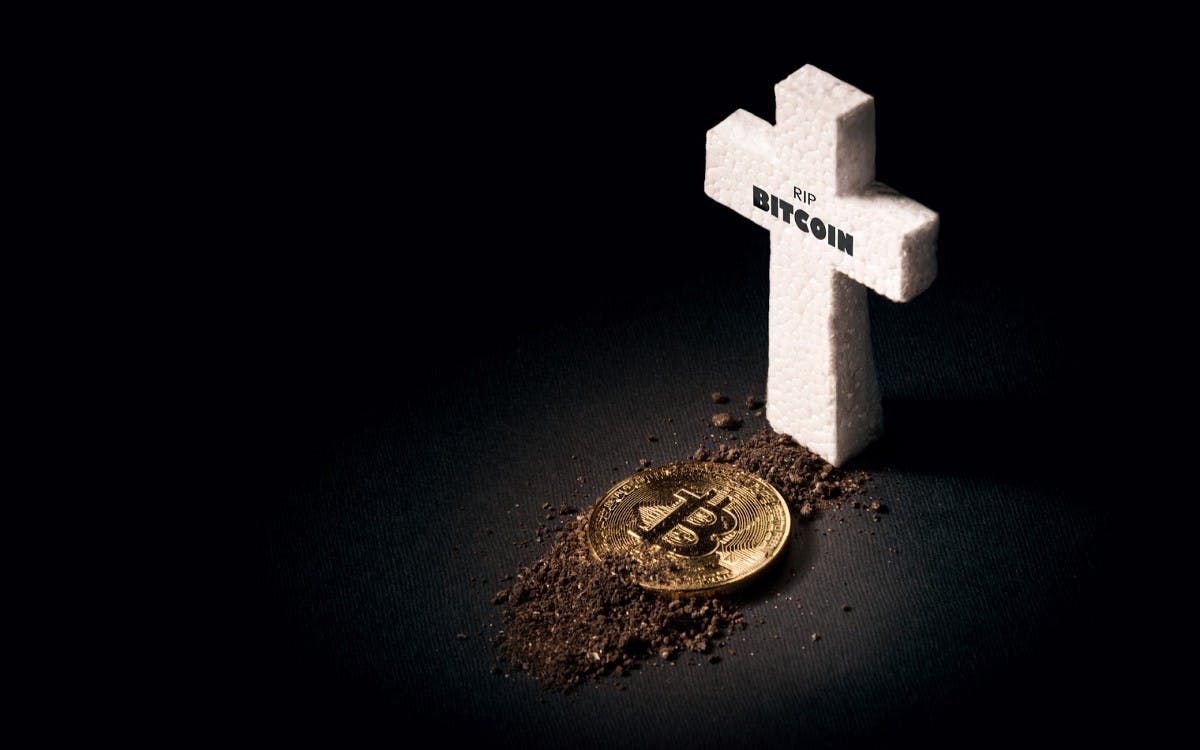
- All
- Analytics
- Technical Analysis
- Trading
- Blockchain
- DeFi
- Guides
- Company News
- Educational
- Opinion
- Price Predictions
- Tools
- Market News
- News
- Trading cases
- Practical guides
- Exchanges
- Trading signals
- Cryptocurrency
- Crypto bots
- Other
Become a crypto master
Learn everything about crypto,
trading and bots

Distribution of Wealth in Bitcoin and Other Cryptocurrencies in 2025
- Global Distribution of Wealth in Bitcoin
- Analysis of Commonly Cited News Concerning the Distribution of Bitcoin Wealth
- History of the Early Distribution of Bitcoin
- Distribution of Wealth in Other Cryptocurrencies
- Additional thoughts
- Conclusion: Understanding Wealth Distribution in Bitcoin and Other Cryptocurrencies in 2025
- Current Trends in Cryptocurrency Wealth Distribution (2025)
Start Trading on 3Commas Today
Get full access to all 3Commas trading tools with free trial period

Bitcoin and other cryptocurrencies have revolutionized the financial sector by offering people an alternative method of transacting without using centralized financial systems.
As these digital assets become widely adopted, the distribution of wealth within the cryptocurrency ecosystem is an important issue for discussion. Cryptocurrencies have a different wealth distribution landscape from traditional fiat currencies due to their decentralized nature and the potential for rapid price increases.
In this article, we will explore the distribution of wealth in Bitcoin and other cryptocurrencies. We'll also consider the news that is usually cited about Bitcoin wealth distribution.
Global Distribution of Wealth in Bitcoin
According to Bitinfocharts, as little as 0.5% of addresses own more than 85% of all BTC, which would seem to be quite uneven. However, everything is not that simple.
First of all, the largest wallets in the Bitcoin network are the cold wallets of exchanges storing their users’ funds, and it is not correct to take them into account. It is also not entirely accurate to consider the majority of addresses holding very old unspent outputs (2011 and earlier). According to experts, most of the coins held at these addresses will not move again. In addition, it is well established that roughly three percent of all coins are lost for various reasons.
That is why the presented data is not entirely fair. Which is the more accurate picture, then? The one that is more transparent and understandable?
The CoinMetrics report comes to the rescue; in this report, analysts excluded long-spent addresses as well as the ones created for business purposes, and only concentrated on the addresses with the equivalent of more than one ten-billionth of the total supply, or $20.5 at the time of the writing.
The analysts found that the number of addresses that hold more than one-thousandth of the total circulation as a percentage has decreased from 33% to 11% of all BTC between 2011 and 2020. The same applies to the rest of the fairly large holders (more than one ten-thousandth, more than one hundred-thousandth), their values are decreasing. At the same time, the number of small deposits in the network is growing. It turns out that over time, the distribution of wealth in the Bitcoin network gradually becomes more even.
Analysis of Commonly Cited News Concerning the Distribution of Bitcoin Wealth
Here are some of the commonly cited news about Bitcoin wealth distribution:
- "Bitcoin Wealth Concentration Is Worse Than You Think" (Bloomberg, January 2022)
- "The Top 1% Own 90% of Bitcoin" (CNBC, February 2022)
- "Bitcoin Wealth Inequality Is Worse Than Inequality in the Real World" (The Guardian, March 2022)
According to these articles, a very small number of people control a disproportionately large share of Bitcoin. For example, the Bloomberg report cites that the top 1% of Bitcoin investors hold 40% of all Bitcoin. According to the CNBC study, the wealthiest 1% of Bitcoin holders own 90% of the overall supply.
The research referenced in the Guardian report revealed that inequality in Bitcoin wealth is worse than inequality in the real world.
Different factors contribute to the high concentration of wealth in Bitcoin. One factor is that Bitcoin is a new asset that has only been around for a short period. This suggests that there hasn't been enough time for the assets to be evenly distributed.
Another factor is that Bitcoin attracts investors because of its high volatility. Speculators generally assume greater risk to maximize their chances of success, which can result in the concentration of wealth in the hands of a select few.
The enormous wealth concentration in the Bitcoin market raises some concerns. It suggests, among other things, that newcomers to the cryptocurrency market face difficulties. It is difficult for new investors to buy enough Bitcoin to make a significant investment when a small group of people controls most of the Bitcoin. It also means that Bitcoin is more easily manipulated. If a small group of people controls the bulk of Bitcoin, they may be able to influence the price of Bitcoin to their benefit.
The concentration of Bitcoin wealth is a concern for many people. Some believe it is a sign that Bitcoin will not be a viable currency. Others believe it is a sign that Bitcoin is used for criminal activities. And others believe that Bitcoin is not an equitable and fair asset.
The long-term consequences of Bitcoin wealth concentration remain unknown. However, this is a major issue that must be addressed.
History of the Early Distribution of Bitcoin
Since its inception in 2009, Bitcoin, the world's first decentralized cryptocurrency, has sparked widespread interest and adoption. To understand the early distribution of Bitcoin, one must first learn about its anonymous creator, Satoshi Nakamoto, as well as the early methods used to distribute this ground-breaking digital currency.
The Genesis Block
On January 3, 2009, the Genesis Block, also known as Block 0, which is the first block in the history of Bitcoin, was mined. This initial block is significant since it launched the Bitcoin blockchain.
Within this block, Nakamoto included a message that referenced a headline from The Times newspaper: "The Times, January 3, 2009: Chancellor on brink of second bailout for banks." The message emphasized Bitcoin's decentralized nature as well as its role as an alternative to the traditional financial system.
Mining and Distribution
In the early days of Bitcoin, mining was the main method of distribution. Miners validate network transactions by using their computing power to solve complex mathematical puzzles known as Proof of Work.
The miners would then be rewarded with newly minted Bitcoins for their efforts. In the early stages of Bitcoin distribution, mining was easy, and anybody could use regular computers to mine Bitcoin.
Fair Launch
Nakamoto devised a diminishing block reward system to ensure a fair distribution. The block reward was initially set at 50 Bitcoins, with the payout halving every four years. This strategy was designed to decrease inflation and promote early adoption. As more people became interested in mining and the network's computer capacity rose, the difficulty of mining new currencies increased.
Early Adopters
During Bitcoin's early years, a small group of early adopters, cypherpunks, and technology enthusiasts expressed interest in the cryptocurrency. These individuals played an important role in raising awareness and developing the infrastructure required for its growth. Many early Bitcoin adopters obtained the cryptocurrency through mining or peer-to-peer transfers with other community members.
The Pizza Transaction
The exchange of 10,000 bitcoins for two pizzas is one of the most popular early Bitcoin transactions. This transaction was made on May 22, 2010, which is now known as Bitcoin Pizza Day, by Bitcoin enthusiast Laszlo Hanyecz. Although the true value of the digital currency was unknown at the time, this incident indicated an early use of Bitcoin as a means of exchange.
Emergence of Exchanges
As Bitcoin's popularity increased, so did the demand for specialized exchanges that allowed users to buy and sell Bitcoin using fiat currencies. BitcoinMarket.com, the first Bitcoin exchange, was launched in March 2010. This key achievement increased the accessibility of Bitcoin by allowing more people to buy the virtual currency without the specialized expertise or equipment required for mining.
Bitcoin Faucets and Airdrops
Apart from mining and direct trades, Bitcoin was also distributed using other methods. The concept of Bitcoin faucets, which paid users small amounts of Bitcoin in exchange for performing tasks or solving captcha verifications, was one such strategy. These faucets were important in making Bitcoin more widely known.
Bitcoin airdrops, a relatively new phenomenon, involve the distribution of free Bitcoins to owners of specific cryptocurrencies or participation in specific projects. Airdrops have increased in popularity as a means of promoting new coins or blockchain projects.
Distribution of Wealth in Other Cryptocurrencies
While Bitcoin remains the most prominent and widely recognized cryptocurrency, understanding the wealth distribution within other cryptocurrencies is important for gaining a comprehensive view of the crypto landscape.
In this analysis, we will explore the wealth distribution patterns in prominent altcoins, including Ethereum, Ripple, Litecoin, Bitcoin Cash, and others.
Ethereum (ETH)
Ethereum, the second-largest cryptocurrency by market capitalization, differs from Bitcoin in its underlying technology and use cases. With its smart contract capabilities, Ethereum has attracted a diverse range of participants, leading to a more varied wealth distribution.
However, data on Ethereum's wealth distribution is challenging to analyze due to the large number of addresses and the prevalence of smart contracts. However, it is evident that large investors, mining pools, and early adopters hold a sizable portion of Ether.
Ripple (XRP)
Ripple, designed primarily for facilitating fast and low-cost international money transfers, has a distinctive wealth distribution compared to other cryptocurrencies. Ripple Labs, the company behind XRP, initially distributed a large portion of the currency among strategic partners and financial institutions, resulting in a more centralized distribution.
However, over time, there has been a gradual decrease in the concentration of XRP holdings among these entities, with a more diversified ownership base developing.
Litecoin (LTC)
Litecoin, often referred to as the "silver to Bitcoin's gold," was created in 2011 and shares many similarities with Bitcoin. The wealth distribution in Litecoin, although less researched compared to Bitcoin, is expected to follow a similar pattern.
Early miners and adopters likely possess a significant portion of the wealth, as is the case with most cryptocurrencies. However, with the passage of time and wider adoption, the wealth distribution in Litecoin may have become more diverse.
Bitcoin Cash (BCH)
Bitcoin Cash emerged in 2017 as a result of a hard fork in the Bitcoin blockchain. It aimed to address some of the scalability issues with Bitcoin. The wealth distribution in Bitcoin Cash is likely to resemble that of Bitcoin due to its shared history. However, it's worth noting that Bitcoin Cash has a smaller market capitalization and user base compared to Bitcoin, which may result in slightly different wealth distribution patterns.
Cardano (ADA)
Cardano is a blockchain platform that aims to provide a secure and scalable infrastructure for the development of decentralized applications (dApps) and smart contracts. In terms of wealth distribution, Cardano stands out for its unique consensus algorithm, called Ouroboros.
Ouroboros uses a proof-of-stake (PoS) mechanism, which means that wealthier participants who hold a larger stake in the cryptocurrency have a higher probability of being chosen to validate transactions and create new blocks. This creates a wealth concentration among those with significant holdings of ADA, which includes early adopters, initial coin offering (ICO) participants, and large staking pools.
However, Cardano's design also incorporates mechanisms to encourage broader participation and decentralization, such as delegation and the use of stake pools, which aim to mitigate the concentration of wealth.
Binance Coin (BNB)
Binance Coin is the native cryptocurrency of the Binance exchange, one of the world's largest and most popular cryptocurrency exchanges. BNB has seen significant growth due to its utility within the Binance ecosystem, such as providing discounts on trading fees and participating in token sales on the Binance Launchpad.
Wealth distribution in Binance Coin is influenced by several factors. BNB was initially distributed through an ICO, which likely led to early adopters and ICO participants holding a significant portion of the wealth.
In addition, Binance periodically conducts token burns, using a portion of its profits to buy back and destroy BNB tokens, which can impact wealth distribution by reducing the supply and potentially increasing the value for remaining holders.
Polkadot (DOT)
Polkadot is a multi-chain platform that enables interoperability between different blockchains. Its unique design allows for the seamless transfer of assets and data across multiple networks.
In terms of wealth distribution, Polkadot operates on a staking model similar to Cardano, using a PoS consensus algorithm. As a result, wealthier participants who hold a larger stake in DOT have a higher probability of being selected as validators and earning staking rewards.
Early adopters, ICO participants, and larger staking pools likely possess a significant portion of the wealth. However, Polkadot also incorporates mechanisms to promote decentralization, such as allowing participants to nominate validators and engage in governance decisions.
Solana (SOL)
Solana is a high-performance blockchain platform designed for decentralized applications and crypto-currencies. With its emphasis on scalability and speed, Solana has gained attention in the crypto community.
Regarding wealth distribution, Solana's initial distribution occurred through a public sale, a private sale, and a strategic token allocation. Early participants, strategic partners, and investors are likely to hold a significant portion of SOL tokens.
However, the Solana ecosystem also encourages wider participation through staking, where token holders can delegate their SOL tokens to validators and earn rewards. This mechanism promotes broader ownership and participation within the network.
Additional thoughts
The analysis of the distribution of wealth in Bitcoin reveals a pattern of concentration, with a small number of people or institutions having a substantial share of the total wealth. Early adopters, mining incentives, and market dynamics are some of the factors responsible for this concentration.
Early adopters were able to gain enormous wealth as the value of these digital assets increased with time because they understood the potential of cryptocurrencies in their infancy. Also, mining has been beneficial to those with the resources and computational capability to carry out this activity on a large scale.
It is important to note that the analysis of wealth distribution in Bitcoin and other cryptocurrencies is a complex and evolving field. However, we can learn a lot about the distribution of wealth in these digital assets by examining current studies, market trends, and historical patterns.
Conclusion: Understanding Wealth Distribution in Bitcoin and Other Cryptocurrencies in 2025
In the ever-evolving world of cryptocurrencies, the distribution of wealth remains a topic of significant interest and concern. As of 2025, the landscape of wealth distribution in Bitcoin and various other cryptocurrencies continues to reveal intriguing patterns and challenges. This conclusion summarizes the key points discussed in this article.
Bitcoin's Wealth Distribution: Analyzing the distribution of wealth in Bitcoin presents a complex picture. While initial data may suggest a high degree of concentration, a closer examination reveals a more nuanced scenario. The presence of large exchange wallets and long-unspent outputs skews the initial statistics. When considering a more accurate representation of wealth distribution, we find a gradual trend towards greater evenness over time.
The CoinMetrics report highlights that the percentage of addresses holding substantial portions of the total Bitcoin supply has decreased. This suggests that Bitcoin's wealth distribution is becoming more inclusive as smaller deposits in the network grow. However, it is crucial to note that this transformation is a gradual process, influenced by various factors, including market dynamics, investor behavior, and adoption rates.
Commonly Cited News on Bitcoin Wealth Distribution: Media reports often sensationalize Bitcoin's wealth concentration, leading to alarming headlines. While it is true that a minority of individuals hold a substantial portion of Bitcoin, this phenomenon is rooted in several factors. Bitcoin's relatively short existence and its attractiveness to speculators contribute to this wealth concentration.
The concentration of Bitcoin wealth raises legitimate concerns, including the difficulty for newcomers to enter the market and the potential for price manipulation by a small group of holders. These concerns have fueled debates about Bitcoin's suitability as a currency and its association with criminal activities. The long-term implications of this wealth distribution remain uncertain but warrant ongoing scrutiny.
History of Early Bitcoin Distribution: To understand Bitcoin's distribution of wealth, it is essential to revisit its early days. Bitcoin's creator, Satoshi Nakamoto, initiated the cryptocurrency with the Genesis Block in 2009, emphasizing its decentralized nature and alternative to traditional finance. Early distribution primarily occurred through mining, where miners were rewarded with newly minted Bitcoins. This approach aimed to promote fairness and incentivize adoption.
Early adopters played a pivotal role in Bitcoin's growth, accumulating wealth through mining and peer-to-peer transactions. Notably, the infamous Bitcoin Pizza Day marked an early use of Bitcoin as a means of exchange. The emergence of exchanges further facilitated Bitcoin's distribution by allowing users to buy and sell it with fiat currencies.
Distribution of Wealth in Other Cryptocurrencies: While Bitcoin dominates the cryptocurrency space, understanding wealth distribution in other cryptocurrencies provides valuable insights. Ethereum, with its smart contract capabilities, boasts a more diverse wealth distribution compared to Bitcoin. Ripple initially exhibited a more centralized distribution but has since diversified. Litecoin, created in 2011, likely follows Bitcoin's wealth distribution pattern.
Bitcoin Cash, stemming from a 2017 hard fork, mirrors Bitcoin's distribution, albeit on a smaller scale. Cardano's unique PoS mechanism creates wealth concentration among larger stakeholders but incorporates features to promote decentralization. Binance Coin's distribution is influenced by ICOs and token burns, while Polkadot and Solana utilize PoS systems with early adopters and strategic investors likely holding significant shares.
Conclusion:
The emergence and subsequent rise of Bitcoin and other cryptocurrencies have undoubtedly stirred transformative conversations within the global financial landscape. Digital assets offer a potent alternative to traditional centralized financial systems and showcase a stark contrast in the distribution of wealth compared to fiat currencies.
The perception of Bitcoin wealth being excessively concentrated in the hands of a few is often sensationalized in headlines from major media outlets. While it's true that the figures at a superficial glance can be alarming, a more nuanced exploration paints a diverse picture. Many of the Bitcoin addresses that account for large holdings belong to exchanges safeguarding funds for myriad users. Additionally, a sizable proportion of old, untouched Bitcoin, likely lost or forgotten, skew the distribution further. Analyses like the one from CoinMetrics, which offer a more meticulous approach by excluding certain types of addresses, suggest a gradual progression towards a more equitable distribution of Bitcoin wealth over time.
It's vital to address concerns surrounding the concentration of Bitcoin wealth. Such concentration might be attributed to Bitcoin's novelty as a relatively young asset and its allure for speculative investment due to its volatility. Understandably, these concentrations may pose challenges for new market entrants and have implications on market manipulation.
However, the early days of Bitcoin also hold fascinating insights. Satoshi Nakamoto's anonymous creation, represented in the Genesis Block, signifies Bitcoin's decentralized ethos and its critique of traditional banking systems. In its infancy, Bitcoin saw a fair distribution method through mining, enabling a wide spectrum of users to participate in its growth. These early days also witnessed community-driven endeavors like the famous pizza transaction and the emergence of dedicated Bitcoin exchanges, fostering its adoption and use.
Diving into altcoins – cryptocurrencies other than Bitcoin – offers additional insights. Ethereum, for instance, while majorly known for its smart contract functionality, also portrays a varied wealth distribution pattern, further complicated by its broad use-cases. Ripple, with its focused utility for efficient international transactions, has seen a gradual decentralization of wealth. Other cryptocurrencies like Litecoin, Bitcoin Cash, Cardano, Binance Coin, Polkadot, and Solana, each come with unique wealth distribution dynamics, influenced by their specific origin stories, technological infrastructure, and community engagement.
In wrapping up this exploration of wealth distribution in the cryptocurrency sphere as of 2025, a few key points emerge. While cryptocurrencies, particularly Bitcoin, have exhibited wealth concentrations, this landscape is continually evolving. Factors like early adoption, mining incentives, and technological developments all play significant roles in shaping this distribution. The cryptocurrency domain, though often painted with a broad brush of volatility and uncertainty, is undeniably complex. As the ecosystem grows, understanding these nuances becomes imperative for both existing participants and those looking to step into this transformative financial frontier.
Current Trends in Cryptocurrency Wealth Distribution (2025)
As of 2025, the balance of cryptocurrency wealth remains heavily affected by systemic changes, including growing institutional involvement, shifting regulations, and the rising dominance of DeFi platforms.
Exponential Investments and Concentrated Accumulation of Wealth
The increasing role of institutional investors in the market is still evident. Bitcoin ETFs and similar funds have become dominant, holding approximately 1,250,000 BTC, representing close to 5.9% of total Bitcoin supply. An even more pronounced trend is the growth of individual funds: Black Rock’s iShares Bitcoin Trust is estimated to own 530,831 BTC.
Government Holdings and Strategic Reserves
Controlled Bitcoin assets by governments have surged as well. The U.S. leads the list with 207,189 BTC followed by China and the U.K. with 194,000 BTC and 61,000 BTC respectively. Most of these reserves have been constructed from seized assets and strategic grants.
Decentralized Finance and Wealth Redistribution
The expansion of access to advanced financial services such as lending and trading without centralized intermediaries perpetuates wider asset distribution. However lowest strata participation still remains skewed towards tech-savvy users with a high tolerance for risk and innovation.
Developments of the Law and Access to Markets
The advancement of regulations in important parts of the world such as the United States has enhanced the recognition of digital assets. The establishment of a Bitcoin Strategic Reserve and a government-controlled digital asset reserve underscore a more vigorous incorporation of cryptocurrency into the country’s economic policy.
Final Thoughts
In 2025, the crypto wealth landscape is marked by the increasing participation of institutions and governments alongside the emergence of decentralized systems. Concentration of assets continues to be problematic, but the combination of DeFi infrastructure and laws that clearly define boundaries provide fresh opportunities to regulated participants in the market.
FAQ
As of March 8, 2023, the market capitalization of Bitcoin was $825 billion, or around 0.2% of the estimated $431 trillion in global wealth. However, given Bitcoin's volatile nature and the dynamic structure of the world's wealth, this percentage may change. Bitcoin wealth is also very unequally distributed, with a small number of people holding a substantial percentage, thereby reducing Bitcoin wealth for the rest of us.
According to Forbes, 19 billionaires have amassed their wealth using Bitcoin, including Changpeng Zhao, the CEO of Binance, who is estimated to be worth $6.5 billion. Other famous Bitcoin millionaires include FTX developer Sam Bankman-Fried, Coinbase CEO Brian Armstrong, and Bloq co-founder Matthew Roszak.
The volatile nature of Bitcoin allows the number of billionaires to change. There were 40 Bitcoin millionaires in 2017, but just 12 after the 2018 Bitcoin meltdown. The number of Bitcoin billionaires is expected to fluctuate; however, it may increase as Bitcoin becomes more widely adopted.
The founder of Bitcoin, Satoshi Nakamoto, who only goes by the pseudonym Satoshi, is thought to be the largest Bitcoin holder. Nakamoto is alleged to have over a million bitcoins valued at more than $50 billion. These assets are stored in different wallets, some of which have been idle for years and others that are used for small transactions.
It's unknown what Nakamoto intends to do with their Bitcoin holdings; speculations range from never selling to perhaps selling if the price reaches an all-time high. Regardless, the anonymous holder wields considerable weight in the Bitcoin market.
The creator of Bitcoin, Satoshi Nakamoto, is estimated to be the wealthiest owner, with over 1 million coins worth $50 billion.

Adedamola is a highly resourceful content writer with comprehensive experience in researching and creating simple content that engage and educate the audience. He is interested in improving the marketing results of blockchain and crypto brands through great content.
READ MORE
- Global Distribution of Wealth in Bitcoin
- Analysis of Commonly Cited News Concerning the Distribution of Bitcoin Wealth
- History of the Early Distribution of Bitcoin
- Distribution of Wealth in Other Cryptocurrencies
- Additional thoughts
- Conclusion: Understanding Wealth Distribution in Bitcoin and Other Cryptocurrencies in 2025
- Current Trends in Cryptocurrency Wealth Distribution (2025)





